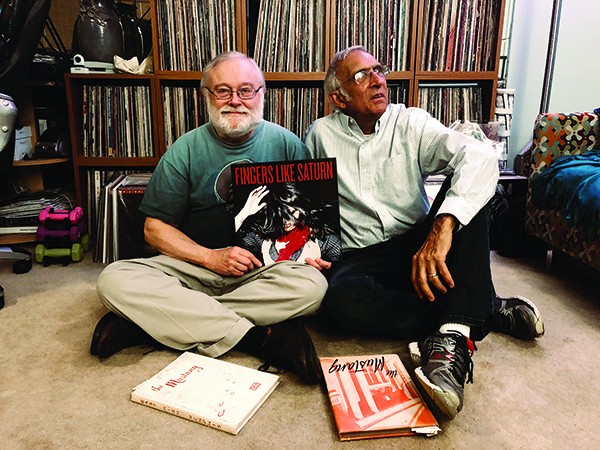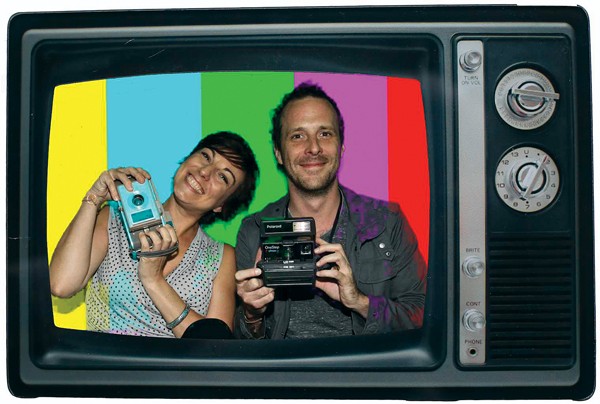Regular readers of these pages already know about a particular musical niche in which Memphis has lately played a pivotal role: the Mellotron revival, which has slowly been gathering steam over the last two decades.
Collector and enthusiast Winston Eggleston, son of famed photographer William Eggleston, has instigated concerts featuring the 1960s-era keyboard, which uses analog tape loops to eerily recreate the sounds of real instruments and even whole bands at the push of a key. So far, the culmination of this has been the stunning Mellotron Variations concert in April 2018 at Crosstown Arts, in which local players Robby Grant and Jonathan Kirkscey were joined by Pat Sansone (Wilco) and John Medeski (Medeski Martin & Wood), presenting semi-improvised original pieces that showed off the evocative range of multiple Mellotrons being played at once.
 Jamie Harmon
Jamie Harmon
l to r: Robby Grant, Jonathan Kirkscey, John Medeski, Pat Sansone
This Friday, that concert will be released as a live LP on Spaceflight Records, with a film of the concert on the way. I spoke with Grant about how this project just seems to grow more legs at every turn.
Memphis Flyer: It seems like with Mellotron Variations, you’re making more use of the rhythm fill features, the stock rhythm section recordings featured in the old Mellotrons.
Robby Grant: Yeah, they call those the rhythm and fills. It might be due to the way we were writing these for the show. We didn’t really compose these to be on a record. Because Pat and John weren’t there, Jonathan and I spent a lot of time working on these songs, and I think maybe it was a shorthand way of experimenting with sounds. Certainly Jonathan had a couple songs that were very composed, but this was another way to play around and see what felt right. We wanted the hour-long show to be kind of varied. All you really have to do is dial up those rhythm and fills and add different noises and loops. It’s kinda like when you first get any new keyboard. The most innocent and fun part is just going through and finding sounds.
And due to John and Pat being busy elsewhere, you guys only had a limited number of hours to prep for the show, correct?
It’s like a yin/yang kinda thing. Jonathan and I had a really long time. From January to April of 2018, we were working on it at least three to four times a week. Pat and John were only there on a limited basis. Pat came in maybe two weekends in that span of time, and John came in just one weekend in February. So that was when we really got together for three days and wrote the songs. We developed some ideas, and then Pat and John came back for three days before the actual show in April and we rehearsed.
Were there particular challenges in mixing down recordings of a live show?
We didn’t intend to make this a record, honestly. It was all built around the performance. And that came out so well, we were like, let’s try this. Jonathan probably spent 100 hours mixing and editing it. Since it was recorded using direct output from the Mellotrons, we never had crowd noise. So it is a live album, but it doesn’t sound live.
And soon you’ll be releasing a film of the show?
Yes, Justin Thompson led a four-camera shoot that night. And Daniel Lynn at Music+Arts Studio is doing a surround-sound mix for the movie. So this thing just keeps going. We did the show last April, then were invited to play the Solid Sound Festival, and I was like, ‘Okay, that’ll be a good ending.’ Then I got a call from OZ Arts in Nashville. We’ll play that and a Tiny Desk concert on NPR in December. If people want us to do it, we’ll do it!

 Dan Ball
Dan Ball  IMDB
IMDB 
